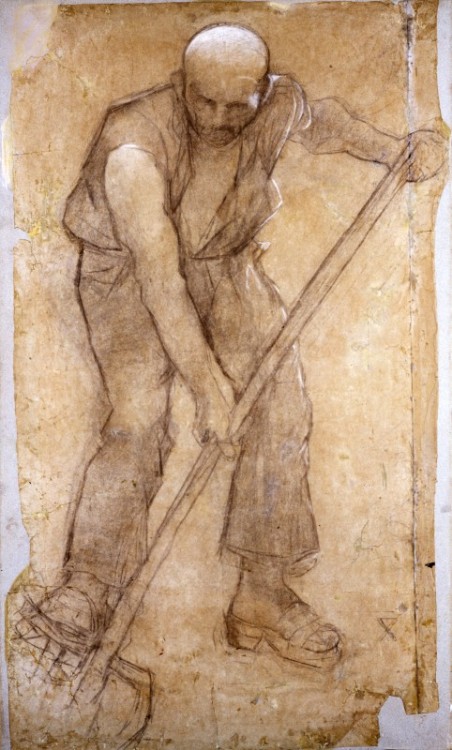italianartsociety:By Adriana Baranello Giovanni Segantini died on 28 September 1899 in Pontresina,
italianartsociety: By Adriana Baranello Giovanni Segantini died on 28 September 1899 in Pontresina, Switzerland. Segantini was a painter, draughtsman, and significant figure in the development of Italian Divisionism and in the Macchiaioli movement. His painting style was an early model for Futurists Umberto Boccioni, Carlo Carrà and Giacomo Balla. Segantini himself was inspired by the works of the Scapigliati. Overcoming a childhood of poverty by apprenticing in the studio of a photographer in Milan, Segantini studied at the Accademia delle Belle Art di Brera, where he developed the open style of brushwork and careful attention to precise and deft treatment of spatial and perspectival layouts that characterize his idyllic landscapes and country scenes, as well as his numerous commissioned still-lifes. A central theme of Segantini’s work–explored also in Anat Moberman’s post this morning–was motherhood, both human and animal, between which he emphasized the fundamental commonalities. Segantini’s own mother died in 1865, and his father in 1866, leaving the young Giovanni an orphan at age 8. Segantini’s later paintings, from the 1890s show his intensifying interest in the study of color to enhance realism and in the effects of light and artificial light sources. Zampognari in Brianza, 1883-1885, olio su tela, Tokyo, National Museum of Western Art. A messa prima, 1885, olio su cartoncino incollato su legno, Euerbach, Collezione Georg Schaefer. Traghetto all'Ave Maria (II versione), 1886, olio su tela, San Gallo, Fondazione Otto Fischbacher. Alla stanga, 1886, olio su tela, Roma, Galleria Nazionale d'Arte Moderna. -- source link
Tumblr Blog : italianartsociety.tumblr.com





